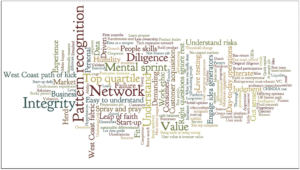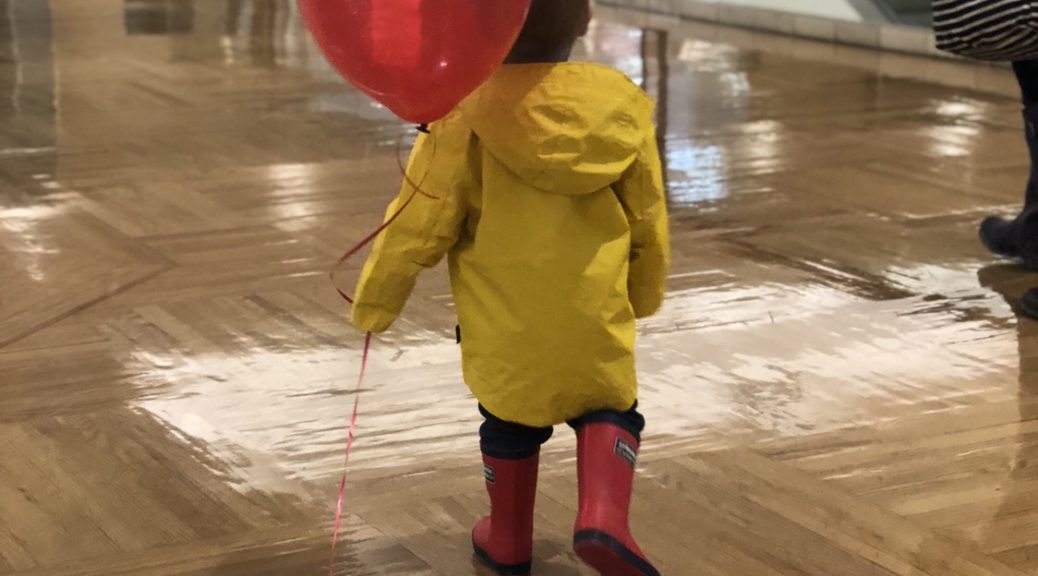Fall 2010
August– Met with Professor Ellen Rudnick about different initiatives at Chicago Booth to promote venture and entrepreneurship. She introduced me to the Chicago Innovation team leaders. Met with the senior leaders there and quickly realized the program was significant more scientific than business model & scaling, where I wanted to focus.
August- Found a way to reach out to nearly every second year student that had some VC exposure and even some recent graduates
September- Met with (now former!) Professor Linda Darragh, who was launching the Impact Investing Summit in Chicago. She was looking to find companies that had both economic and social returns to present to a group of social impact investors. Met and reviewed 20+ companies over 2-3 months and then prepared them for “demo day”. My first real venture and early stage advisory experience. What a THRILL!
November- Applied to Hyde Park Angels and got very lucky to get in in the final spot. During that time it was still run by Ira Weiss (now leading Hyde Park Venture Partners!) and Sam Guren (epic venture investor!). Within months was the head associate for the business services vertical and we were reviewing businesses, meeting with entrepreneurs and analyzing multiple deals every week. Truly an amazing experience that shows an early VC the importance the requirements of vision, analytics, compassion and interpersonal requirements within the VC space.
Silicon Valley Exposure
December- Selected to participate in the Chicago Booth west coast VC trek. This opened my eyes. It was only 3-4 days but it was a magical trip. We met with a dozen venture and start-up firms over 3 days and got an abbreviated insight into the world of VC across multiple different industries and stages of focus. I was beyond hooked… I almost instantly confirmed all my intentions, and knew it was where I wanted to dedicate my career. The combinations of audacious ideas, big bets, the criticality of leadership and teamwork… I loved it.
Day 1: We met with three venture firms and two start-ups….. AirBnB (a month after they closed their Series A) and Optimizely (still pre-seed investment). We were all too focused on the Battery Ventures meeting later in the day to pay attention to the two leaders of these companies trying to tell us to drop out of b-school and join them. Whoops
Day 2: We met with 3-4 more venture firms. One that stood out was Charles Tai from Charles River Associates. He mentioned this report called the “PWC Moneytree Report” and said it listed all the venture firms. I took a mental note. My unstructured and competitive senses simultaneously told me that list was my gameplan.
Day 3: More VC firm meetings. The general theme was “give before you get” and find way to be proactively providing value to the entrepreneurial ecosystem and good things will happen. In a separate meeting another VC told us about how one of his “spray and prey” investments made visual word clouds. Terrible business? Likely. Great way to summarize the data gathering of the trip? Absolutely.
And so, I took my 10+ pages of notes and brought the keywords into the software…and boom… suddenly I had a soft, visually-engaging content way to introduce myself to everyone on the PWC Moneytree Report. Just an icebreaker. And here it is.

January 2011: Reach out to about 80 firms on the PWC 100 list. Found 1-2 partners at each firm where I could make some interpersonal connection. Here are some stats, as I tracked everything in a funnel, like a sales process! (I will be expanding on each stage with some incremental posts but this is the skeleton structure)
Outbounds or Introductions: 110+
Each inbound was light and easy and tried to have a basic connection with the VC based on either their investments overlap in my sector interest or some overlap in their personal interests that were listed on their site or public profiles (Twitter, blogs). I would state my case that I wanted to enter VC and recognized the need to get involved and provide value over the next 24 months of school. I essentially was shopping free help.
It has been well-documented how VCs like to have a set of longitudinal data on an individual for consideration to join the investment team. Mark Suster talks about this with his hires. He needs to see multiple years of data points and experiences to understand the candidate’s performance over time and their general responsiveness to all types of life issues. I couldn’t agree more with the importance of following an “individual’s trend”. Consider these outbounds as merely day 1 of a multi-year process to a formal job in VC. Having an online presence helps share some of your earlier data points, so continue to contribute your interests and general thought processes and action items, when applicable.
Reply engagements & communications: 70
There is conventional wisdom that most VC firms do not hire associates or interns. Many of my initial feedback emails from VCs were quick notes saying as such. But, maintaining a cheery attitude and willingness despite there being no job at the end of the experience is still a great way to keep the conversation flowing. In fact, both places that I ultimately received a job offer from had never had an associate before.
In these meetings I would indicate my area of focus and how I believed my sector interests, perspectives, and growing network (and huste!!) would be a complementary value to the VC firm. And with that background I would offer to be helpful in ANY way. I would always prepare (an hour + for each call) about the person and their investments. I would come with an idea to provide value to them and a specific portfolio company or two. And would always offer to do more for a potential next call.
One of the biggest surprises here was who responded. Very big name VCs would engage or pass me along to a partner in the fund after a few sentences appreciating the word cloud. Amidst all of the “we are not hiring” emails or non-responses seeing how very senior and reputable VCs treated me well when they didn’t know me yet was a nice touch of class and inspiration.
If I was paying it forward they were paying it backward.
Follow-up meetings (in-person or with more materials): 25
These were some pretty in-depth meetings where I would do whatever I had previously offered and then a boatload more. I was of the mindset that I was a free agent and with every meeting I was leveraging prior meeting intelligence gathered around industry terms and market trends. And with that positive feedback loop my conversations became increasing substantive and resulted in a number of referrals.
For any of these meetings I would say “happy to chat over the phone, or I will be in the SF area next Thursday” and if the VC agreed to meet in person, I would buy a flight that day and try to convince a few others to meet in person at the same time.
Take a meeting with everyone. Your goal is to get smarter with every meeting and to ultimately create a mini echo chamber so that in the off chance two VCs you have spoken with know each other (it is a small world in VC) you can reference your communal relationship and begin to establish more credibility. And, if you are really providing value to these individuals, that positive contribution will be recognized and communicated as a method of thanks. Again, do this work even if there is not a job at the end of the tunnel with a specific firm. At worst, your learn and gain experience and gain a bigger network!
It was exhausting but a real thrill.
On-site broad partner “discussions” (interviews): 4
They are never really called interviews but more exposure to other partners in the Fund to see compatibility. In general my approach here was ALWAYS to provide value and assume that they were busy and could look to me to be a mainly independent asset to supplement their work and go target and find industries that they were not fully into yet.
For my interview with the KPCB team I proactively analyzed two to three big industry trends and used an investing framework I was learning in school and from my ongoing meetings. I used those frameworks to assess the industry trends, identify where the best companies would be positioned and went and found a few of them. The goal was to show I already knew what the job was… even though I was (in retrospect) really oblivious.
Job offers: 2!
Both came in March of 2011 so it was a full speed initiative for those four months. And then the real work began!


